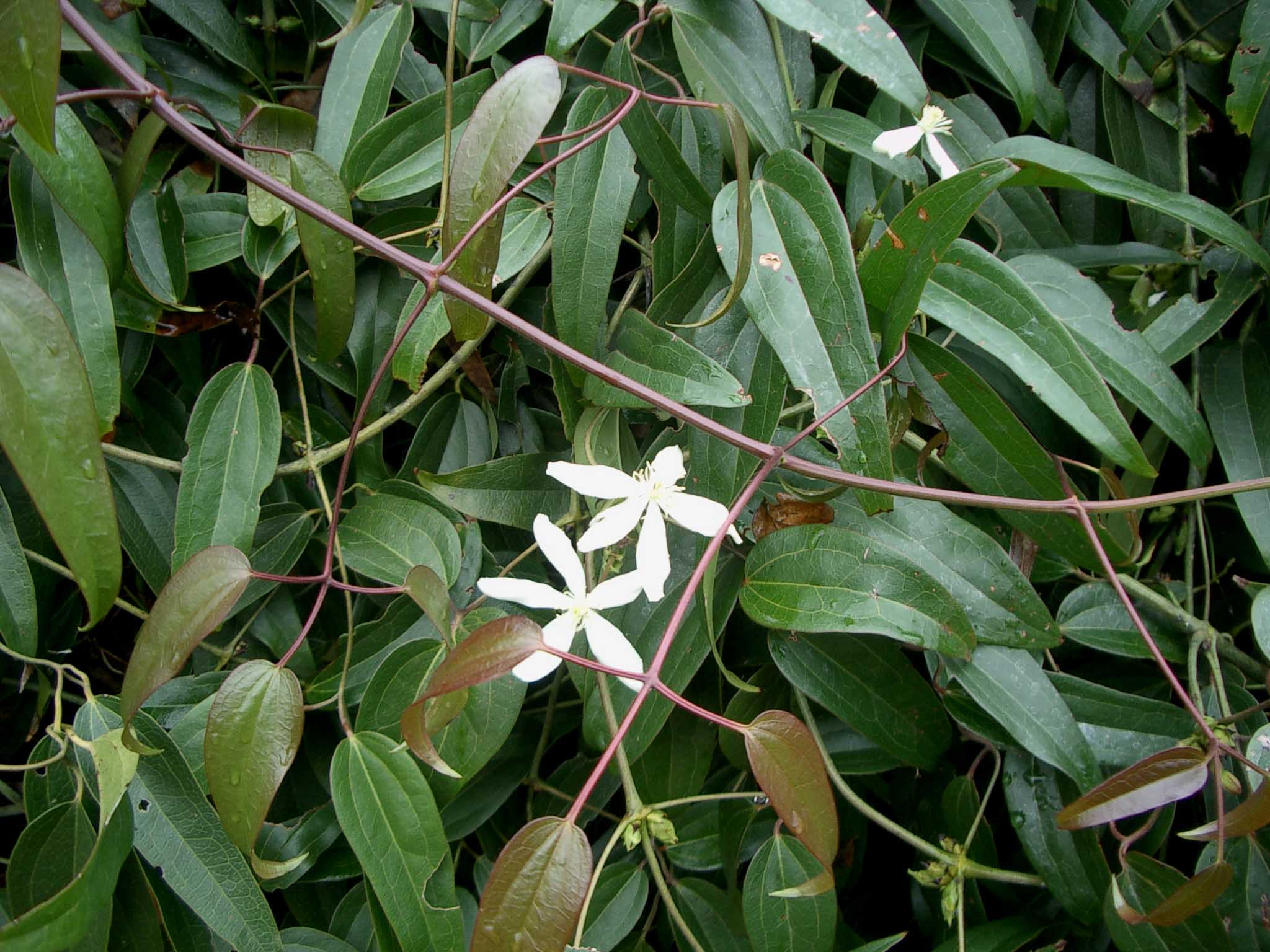Clematis is a vine that can be grown on walls,
pergolas, in containers, or can ramble through trees and shrubs. There are over 600 named varieties of clematis and many more seedlings. Flower colors range from pinks to purples,
blues, reds
and whites
and even a few yellows,
with bi-colored and double options as well. With so many to choose from, it is hard to know what to pick.
Most varieties are deciduous but there are a few evergreen clematis including Armandii
and cartmanii. There is a lot of diversity in flowers, from different shapes, size, color and form. Flower shapes can resemble bells,
lanterns,
tulips, stars,
or saucers.
Flower size may be no larger than an inch up to 8 inches across. Some produce single blooms, while others are doubles.
The flowers are definitely the showiest part of the plant, but many varieties have beautiful seed heads after bloom.
While most clematis plants are vines, there are a few varieties that are non-climbing and are grown as clump-forming perennials or small shrubs.
Not only do clematis vary in flower color and size, but they can also vary by bloom time. Some bloom only in the spring, some bloom all summer and then some bloom in the fall. To help you choose what you are looking for, clematis varieties are grouped into three groups according to blooming time and characteristics: Group 1 (spring bloomers which bloom on old wood only), Group 2 (repeat bloomers which bloom on both old and new wood), and Group 3 (summer or fall bloomers bloom on new growth only).
When planting clematis, choose a site with full morning sun or filtered sun. Most clematis, especially the summer-flowering ones, like bright light on their tops and a cool, rather moist area for their roots. To help keep the base of the plant and the roots cool and shaded you can plant them where other plants can shade them, put a layer of mulch at the base, or plant the plant on the north side of a trellis and pull the vine to the sunny side. Although clematis can grow in full sun, the blooms fade quickly in strong afternoon sun. You will find the plants tend to have more intense color if given some protection from the hot afternoon sun but they will not flower well in the shade.
Clematis need a well-drained, neutral to slightly acidic soil. If you have a strongly acidic soil, adding a little lime into the planting area will help. Clematis vines are not too keen on having their root systems disturbed after planting. Clematis have feeder roots close to the surface. Some gardeners actually plant them at the base of other shrubs and let the vine grow within the other shrub for support and they bloom fine, adding a new dimension to the shrub as well. Clematis are not drought tolerant, so water through the growing season. Clematis do not have tendrils to climb with but actually climb by twisting their leaf stalks around supports so it is necessary to provide some form of support when growing against walls and solid fences. You can use a trellis or mesh for the clematis to twine around but they often need a little assistance getting started on their support structure. Lightly attach the vine with a soft twist tie. Clematis vines are not as flexible as many other vining plants so use care not to break off a vine while getting it attached.
Many gardeners are confused about when to prune their clematis, and so some just let them grow. If left unpruned, many clematis vines appear dead at the base with woody, ungainly stems since all of the new green growth is at the top, along with their flowers. More vigorous species bear a heavy flower display at the top of the plants and end up pulling themselves down under their own weight. Proper pruning of clematis vines stimulates new growth, which increases the number of flowers, and makes the plants more attractive. Timing is critical and varies with the type of clematis you are growing. For group 1, the spring only bloomers, do whatever pruning is needed after they finish blooming. For group 2, those that bloom repeatedly on both old and new wood, you can remove dead or weak wood in the spring as new growth begins. Deadheading the spent blooms will keep them blooming more freely. For group 3, those that bloom on the new growth, prune fairly hard before new growth begins. Staggering the pruning heights can give you a fuller vine with flowers from top to bottom. If you do not know which group your clematis is in then let it grow for a year and time the flowering. If it blooms in the spring only it is type 1. If it blooms spring and intermittently all summer it is group 2 and if it doesn’t start blooming until June or later it is group 3.














